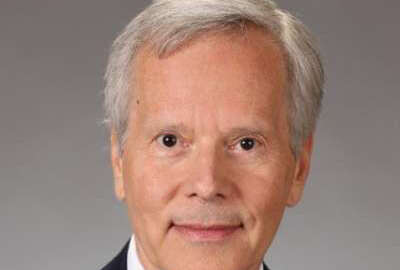Agencies not utilizing program designed to supplement S&T talent via nonprofits
Agencies across the board have an enduring need for scientific and technical talent, the type of people that can be hard to find. Yet many agencies fail to use the...
Best listening experience is on Chrome, Firefox or Safari. Subscribe to Federal Drive’s daily audio interviews on Apple Podcasts or PodcastOne.
Agencies across the board have an enduring need for scientific and technical talent, the type of people that can be hard to find. Yet many agencies fail to use the personnel mobility program, a system that lets scientific and technical employees from nonprofits work temporarily at a federal agency. For some recommendations, the Federal Drive with Tom Temin turned to the acting director for Strategic Issues at the Government Accountability Office Alyssa Czyz.
Interview transcript:
Tom Temin: Ms. Czyz, good to have you back.
Alissa Czyz: Thanks for having me, Tom.
Tom Temin: So tell us more about this program. I hadn’t been aware of it. And it sounds like a lot of agencies aren’t aware of it either.
Alissa Czyz: That’s very true. It’s called the Intergovernmental Personnel Act Mobility Program, or IPA for short. And in essence, it’s exactly how you described. It allows federal agencies to bring in personnel, usually from universities or nonprofit organizations, into their agency for up to a two year period. And it’s really designed to bring folks with highly specialized skills like science and technology or cybersecurity, into the agency to temporarily fill a skills gap for that agency. And then conversely, federal agencies can send folks out to those nonprofits or universities for a similar time period.
Tom Temin: But what about agency to agencies? Is that also part of it? You can borrow someone, for example?
Alissa Czyz: So this program is state and local governments can go into the federal government and vice versa. But this is really an agreement between other organizations and the federal government. So there are other programs that allow for those agency exchanges, but the IPA program is really to kind of get that mixture of talent and folks to come in and get that federal government experience and vice versa they might not otherwise get.
Tom Temin: So are these people interns, fellows, temporary employees? What’s their status once they come in?
Alissa Czyz: They can come in a couple of ways. Usually, they’re on appointments. So they’re a non-federal employee, when they come in. They can also be detailed, so they can be considered like a federal government employee. Most of the agreements that we looked at, in this review, from 2016 to 2020, folks were coming in as a non-federal employee, so they were a temporary person that they were not a true federal employee during their period of time.
Tom Temin: And what does an agency have to do to justify bringing in someone on that basis?
Alissa Czyz: You know that human capital offices and mission folks are looking at what skills gaps they need to fill their agencies. As you know, we’ve been following federal government skills gaps as a high risk area for over 20 years. So this is an important issue for the federal government, they have a shortage across agencies of kind of folks with highly specialized skills. And really, they just need to identify the need. And then they can look at certified organizations that use this program, and then see if there’s a good match for somebody to come in. A lot of it, and, you know, we look at organizations like NASA DoE, they would bring folks in to kind of lead a specific project, right at NASA, for example, they lead a team of scientists on a specific project with highly specialized skills.
Tom Temin: And these certified organizations, they can be academia, what else can they be?
Alissa Czyz: Sure, they’re usually academia or nonprofit, there are certain criteria they have to meet to become certified. But yes, but most of them are university folks or nonprofits. And it’s attractive to kind of university professors, for example, because they can come in and get that valuable federal government experience, which is really important for their field of study, but they don’t give up their tenure, right? They can go back to their university after they serve their time on this IPA assignment.
Tom Temin: Can corporations participate? Suppose there’s some really good quantum genius, say at IBM, I’m just making that up. Could they come in as a fellow or an intern or associate for a year or so and do this?
Alissa Czyz: So this program is more for, they have to have a 501(c), they have to be on nonprofit or be university type of program or stay or local government as well.
Tom Temin: We’re speaking with Alyssa Czyz. She is acting director for strategic issues at the Government Accountability Office. And could one problem with this program be that you’ve got to budget for it, you’ve got to pay the person? And with continuing resolutions dominating good portion of each fiscal year, agencies don’t know whether they have the money or not until too late into the year.
Alissa Czyz: That could be a limitation. However, most of the agencies and the agreements that we reviewed, the agencies enter into a cost sharing arrangement with the homeowner organization for the participant, so they might not cover 100% of the cost. The person’s home organization might pick up a percentage of that cost to you because they see it valuable to have that person serve in the federal government for a period of time. But it is something that agencies have to consider. But again, it’s temporary. So it is less of a cost than bringing on a permanent federal hire and have to go through all of that particular training and investment for full time federal employee.
Tom Temin: And does anyone keep track of how many of these opportunities exist each year in the government? That is to say, if I’m a professor, and I might want to try this, is there somewhere I can go to find out who might want me?
Alissa Czyz: So agencies and organizations tend to kind of communicate with each other, those that use the program a lot. One of the findings that we found, though, in this report is the Office of Personnel Management who has responsibility for oversight of the program, was not doing a good job tracking how much the program was being used across federal agencies. So we made a recommendation there that OPM should do a better job tracking. And that way they can advertise the program because we found a lot of benefits for the program, both for the federal agencies and the folks that participated in it. But not having good oversight of how much or which agencies are using the program the most really kind of hinders getting the word out about the program as well.
Tom Temin: So you have these two recommendations then for OPM, the director should update written guidance regarding non-federal mobility program participants, and then establish a process and update guidance to obtain complete and accurate data about, as we talked about, the quantity of these jobs opening. What’s the response from OPM been? They’ve kind of been getting hit from all sides lately on what they ought to be doing.
Alissa Czyz: Right. So the first recommendation had to do with supervisory responsibilities. We found that OPM’s guidance, written guidance that is, was a little bit unclear on the types of activities these participants could do while they were at federal agencies, particularly giving other federal employees that they might be supervising performance ratings. Because that involves a lot of training that these participants might not be getting. So we made a recommendation that OPM needs to update that guidance to be clear on what types of kind of performance management activities participants can do. OPM concurred with that recommendation and said that they would update their guidance.
On the second recommendation that I had mentioned earlier about OPM needing to do a better job tracking how much the program was being used, OPM actually disagreed with that recommendation. They said that agencies themselves were tracking their usage of the program. However, we respectfully think that OPM does have a key role here in oversight and also is positioned as the strategic human capital manager for the federal government, and has a role in advising agencies on how to close critical skills gaps. So without having good information about the program and how much it’s being used, which is one tool that that agencies can use to close skills gaps, OPM is not really in a great position to be that strategic human capital manager. So we reiterate that the recommendation should be implemented.
Tom Temin: And does anybody keep track of how well these programs work out when the person goes back to their college?
Alissa Czyz: We talked with folks that had participated in the program as well as officials from agencies that did receive the folks. There are lots of benefits that we’ve heard people enjoyed participating in the program, they gain valuable expertise that they were able to bring back to their home organizations. And it was an exciting opportunity for folks, and it filled a mission critical need for the agency as well. So we have a lot of benefits to the program.
Tom Temin: And it’s called IPA and people just aren’t drinking it.
Alissa Czyz: That’s right. Exactly.
Tom Temin: Alissa Czyz is director for strategic issues at the Government Accountability Office. Thanks so much for joining me.
Alissa Czyz: Thanks for having me, Tom.
Copyright © 2025 Federal News Network. All rights reserved. This website is not intended for users located within the European Economic Area.
Tom Temin is host of the Federal Drive and has been providing insight on federal technology and management issues for more than 30 years.
Follow @tteminWFED






